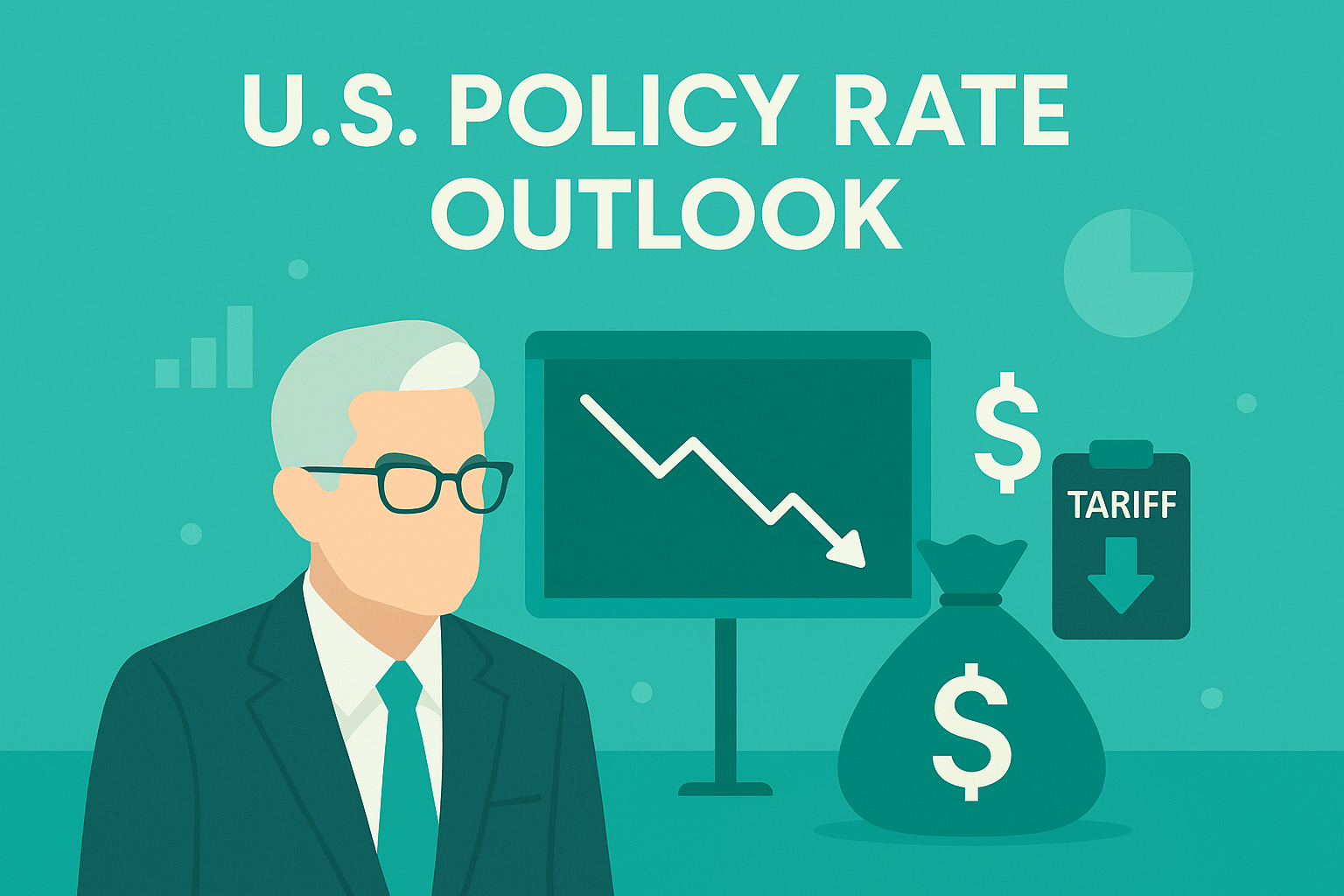Introduction
The Federal Reserve now faces one of the most complex environments in decades. Chair Jerome Powell’s Jackson Hole speech underscored a changing balance of risks: a softening labor market on one hand, and tariff-driven inflationary pressures on the other. Against this backdrop, monetary policy must navigate between supporting growth and containing inflation—while also maintaining credibility in the face of political pressure from President Trump.
The Dual Challenge: Weakening Labor Market vs. Tariff Inflation
Labor Market Slowdown
- Unemployment stands at 4.2%, still historically low, but job creation and labor force participation are clearly decelerating.
- Wage growth is moderating, reducing inflationary momentum but raising concerns of underemployment.
Tariff-Induced Inflation
- Trump’s tariff policy, with import duties on autos, steel, and consumer goods, has already begun to lift prices.
- Unlike cyclical demand-driven inflation, tariff inflation is structural—it raises production costs across supply chains.
- This creates a stagflationary risk: higher costs amid slowing growth.
The Policy Dilemma for the Federal Reserve
Rate Cuts as a Stimulus
- Lowering the federal funds rate could stabilize consumption and housing demand, supporting the labor market.
- Dollar depreciation from rate cuts would improve U.S. export competitiveness, partly offsetting tariff-driven trade frictions.
Risks of Premature Easing
- Cutting rates in the presence of persistent tariff inflation may weaken the Fed’s anti-inflation credibility.
- If markets perceive the Fed as yielding to political pressure, long-term inflation expectations could de-anchor.
Political Dimension
- President Trump has openly called for rate cuts, framing monetary easing as necessary to counter tariffs.
- Powell emphasized data dependence and independence, but the Fed is under unusual scrutiny as its decisions intersect with electoral politics.
Market Implications
- Equities: Rate cut expectations fuel rallies, especially in small caps and rate-sensitive sectors. However, tariff-sensitive industries (autos, retail) face margin compression.
- Bonds: Treasury yields have declined, pricing in at least one rate cut by year-end. Longer-term yields remain cautious, reflecting inflation uncertainty.
- Dollar: Easing would exert downward pressure on the dollar, supporting exports but raising import costs, reinforcing tariff inflation.
Scenarios for 2025–2026
| Scenario | Monetary Policy | Inflation Outcome | Growth Outcome | Risks |
|---|---|---|---|---|
| Soft Landing | Gradual rate cuts (25–50 bps) | Inflation stabilizes near 2–2.5% | Growth slows but avoids recession | Requires tariffs not to escalate further |
| Stagflation | Aggressive rate cuts under political pressure | Tariffs keep inflation >3% | Growth stagnates, unemployment rises | Loss of Fed credibility |
| Policy Paralysis | Fed delays cuts due to inflation fears | Inflation stays elevated | Recession risk grows | Over-tightening damages labor market |
| Asset Bubble | Rapid easing fuels risk-taking | Inflation contained short term | Asset markets overheat | Later financial instability |
Economist’s Assessment
The U.S. is entering a new policy regime where traditional demand-driven models are insufficient. Trump’s tariff strategy is a structural shock that shifts the Phillips Curve outward, forcing the Fed into a narrow policy corridor.
- Near-term: A September rate cut is likely, justified by labor market weakness.
- Medium-term: The Fed must adopt a flexible but cautious stance, ensuring that easing does not ignite a second wave of inflation.
- Long-term: Maintaining institutional credibility is paramount—succumbing to political demands could destabilize global confidence in U.S. monetary leadership.
Conclusion
The intersection of Powell’s cautious flexibility and Trump’s aggressive tariff policy defines the U.S. economic outlook. A measured rate cut could provide necessary relief, but the Fed must balance this against the structural inflation imported via tariffs. Ultimately, the success of U.S. monetary policy in 2025–2026 will depend not only on interest rates, but on whether trade tensions can be contained.


